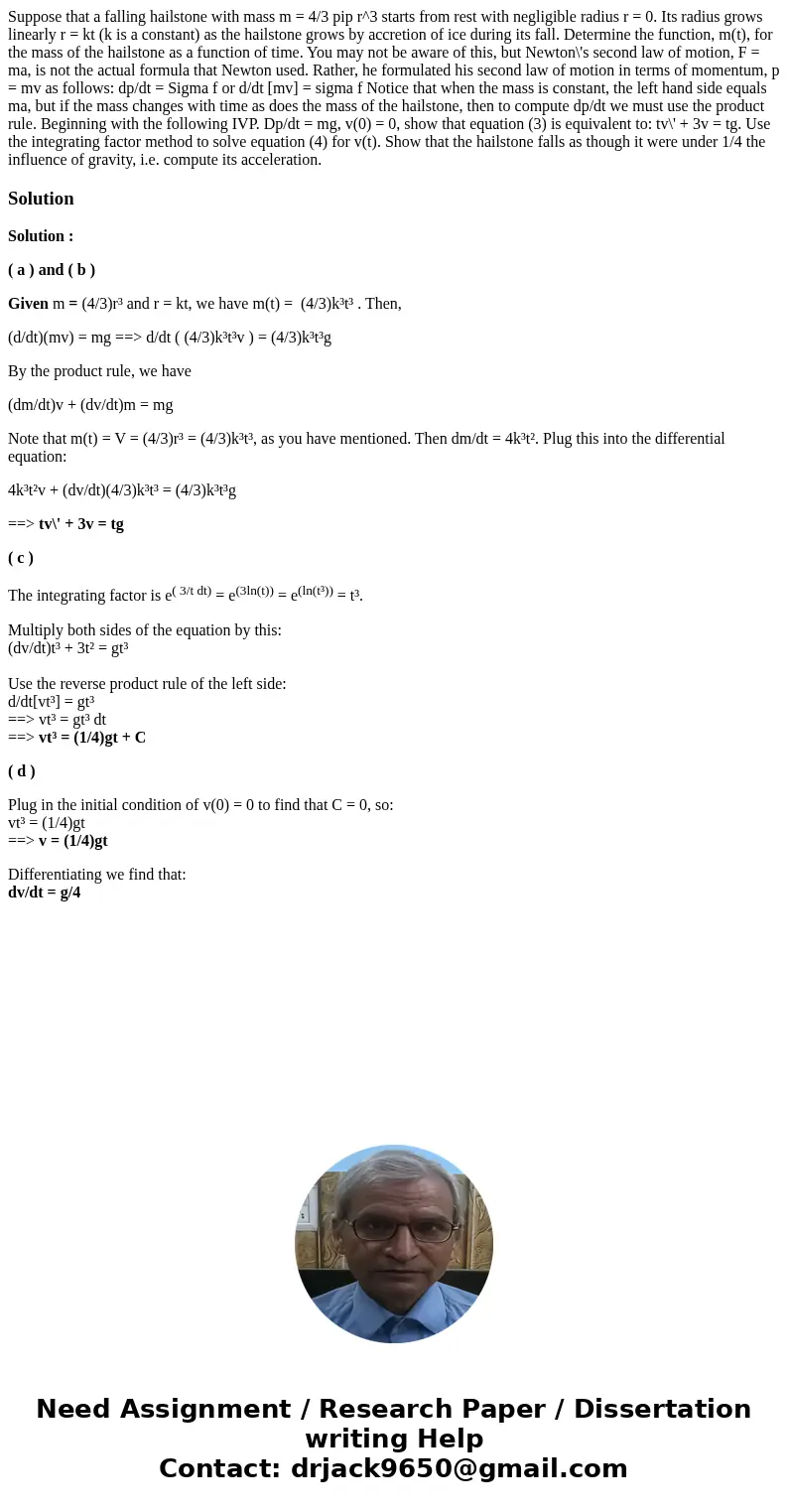Suppose that a falling hailstone with mass m = 4/3 pip r^3 starts from rest with negligible radius r = 0. Its radius grows linearly r = kt (k is a constant) as the hailstone grows by accretion of ice during its fall. Determine the function, m(t), for the mass of the hailstone as a function of time. You may not be aware of this, but Newton\'s second law of motion, F = ma, is not the actual formula that Newton used. Rather, he formulated his second law of motion in terms of momentum, p = mv as follows: dp/dt = Sigma f or d/dt [mv] = sigma f Notice that when the mass is constant, the left hand side equals ma, but if the mass changes with time as does the mass of the hailstone, then to compute dp/dt we must use the product rule. Beginning with the following IVP. Dp/dt = mg, v(0) = 0, show that equation (3) is equivalent to: tv\' + 3v = tg. Use the integrating factor method to solve equation (4) for v(t). Show that the hailstone falls as though it were under 1/4 the influence of gravity, i.e. compute its acceleration.
Solution :
( a ) and ( b )
Given m = (4/3)r³ and r = kt, we have m(t) = (4/3)k³t³ . Then,
(d/dt)(mv) = mg ==> d/dt ( (4/3)k³t³v ) = (4/3)k³t³g
By the product rule, we have
(dm/dt)v + (dv/dt)m = mg
Note that m(t) = V = (4/3)r³ = (4/3)k³t³, as you have mentioned. Then dm/dt = 4k³t². Plug this into the differential equation:
4k³t²v + (dv/dt)(4/3)k³t³ = (4/3)k³t³g
==> tv\' + 3v = tg
( c )
The integrating factor is e( 3/t dt) = e(3ln(t)) = e(ln(t³)) = t³.
Multiply both sides of the equation by this:
(dv/dt)t³ + 3t² = gt³
Use the reverse product rule of the left side:
d/dt[vt³] = gt³
==> vt³ = gt³ dt
==> vt³ = (1/4)gt + C
( d )
Plug in the initial condition of v(0) = 0 to find that C = 0, so:
vt³ = (1/4)gt
==> v = (1/4)gt
Differentiating we find that:
dv/dt = g/4

 Homework Sourse
Homework Sourse